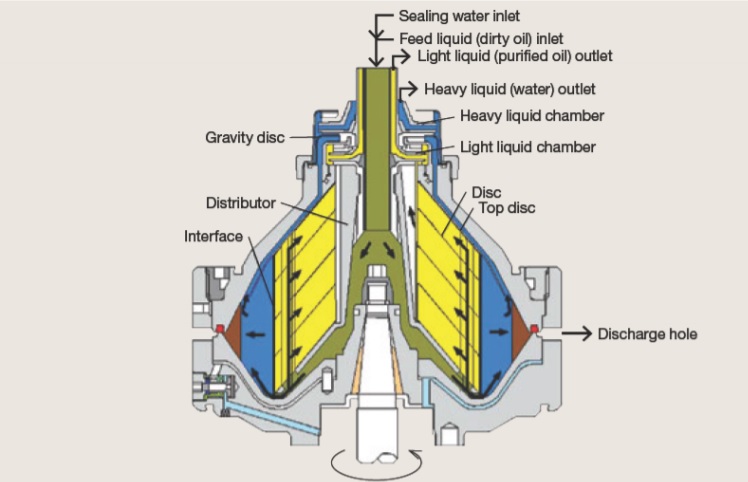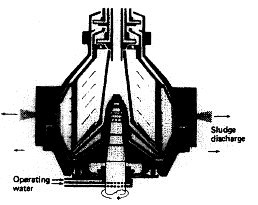
Fuel oil centrifuging for marine use
Treatment of fuel oils and lubricating oils :
Both fuel oils and lubricating oils require treatment before passing to
the engine. This will involve storage and heating to allow separation of
water present, coarse and fine filtering to remove solid particles and also
centrifuging.
The centrifugal separator is used to separate two liquids, for example oil and water, or a liquid and solids as in contaminated oil. Separation is speeded up by the use of a centrifuge and can be arranged as a continuous process. Where a centrifuge is arranged to separate two liquids, it is known as a 'purifier'. Where a centrifuge is arranged to separate impurities and small amounts of water from oil it is known as a 'clarifier'.
The centrifugal separator is used to separate two liquids, for example oil and water, or a liquid and solids as in contaminated oil. Separation is speeded up by the use of a centrifuge and can be arranged as a continuous process. Where a centrifuge is arranged to separate two liquids, it is known as a 'purifier'. Where a centrifuge is arranged to separate impurities and small amounts of water from oil it is known as a 'clarifier'.




